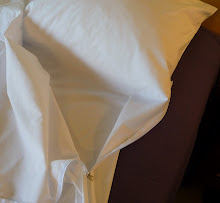A common complaint of travelers who have allergies relates to the question of why they are experiencing reactions after spending a week away or returning home. A traveler may not suffer from, what they think , is an allergic reaction while on the trip, but in a few days,or as many as ten days, after being bitten , present with a welt or lesion.
Studies show that reactions to bedbug bites increase as exposure is increased. A person's first time being bitten may not cause immediate reactions, but can take up to ten days to present as a skin reaction. Repeat exposure to bedbug bites can increase the reaction time from ten days to mere seconds. This is important in determining, if, and when you have been bitten by bedbugs, whether you think it was at the hotel you stayed at, or your home, and if you are seeking compensation or considering litigation.
Bedbug bites are commonly mistaken for a variety of skin diseases such as atopic dermatitis, contact dermatitis, and scabies.
How can you tell the difference between an allergic reaction, like seasonal allergies or dust mite allergies, and a bedbug bite? People with a hypersensitivity to insect bites, and a bedbug is an insect, who are bitten by bedbugs, typically present with symmetrical lesions on their face,neck, arms or legs. Particularly characteristic of bedbug bites are the patterns or groupings of the lesions, which are similar to flea bites. These patterns of bites are usually either linear or triangular in shape and each bite will resemble a bull's-eye, which is typical for insect-bite reactions.
An estimated 80% of the population are sensitive to bedbug bites. In one clinical trial, 18 of 19 persons showed skin reactions after bedbug exposure, mostly, only after, repeated exposure.
While it is generally thought that bedbugs do not transmit disease, and there is no proof that they are capable of disease transmission, conversely, there is no proof that they are not capable of transmission. The concern with bedbug bites is associated with the intense itching caused by the bites. The itching usually leads to scratching which, if severe enough, can cause breaks in the skin, scratches or excoriations, which can become infected. Scarring and/or changes in skin pigmentation, particularly in dark skinned people, can occur.
It is important to note that although most insect bites that cause lesions or eruptions on skin called papular urticaria, bee and wasp stings are painful, mosquitos do not bite in clusters as with bedbugs or fleas. Bedbug bites usually affect hypersensitive people, which may explain why one person , after being bitten, exhibits lesions and itching, while a bedmate might not experience any discomfort.
Bedbug exposure while traveling has become a more common occurrence in the past few years. The causes of of more frequent infestations run from the banning of pesticides like DDT, to the theory that bedbug infestations are cyclical in nature, occurring when factors favor bedbugs. Whatever the cause, there is no doubt that being bitten can ruin a vacation. While home infestations are difficult to predict and even more difficult to eradicate, travel related exposure can easily be prevented.
Wherever you plan to sleep make sure you thoroughly check the bed and surrounding area for bedbugs hiding in cracks and crevices, Be sure to notice any reddish brown stains or spots on sheets or mattresses, this is an indicator of bedbugs. Many travel-related products containing pesticides are available but this course of action is heavy handed and most likely unhealthy. Barrier methods, like an Allersac travel sheet can be a very effective tool in mitigating exposure but cannot guarantee 100% effectiveness as they don't encase the head. With proper inspection and an Allersac, the incidence of bedbug bites, while traveling, can be lessened.









No comments:
Post a Comment